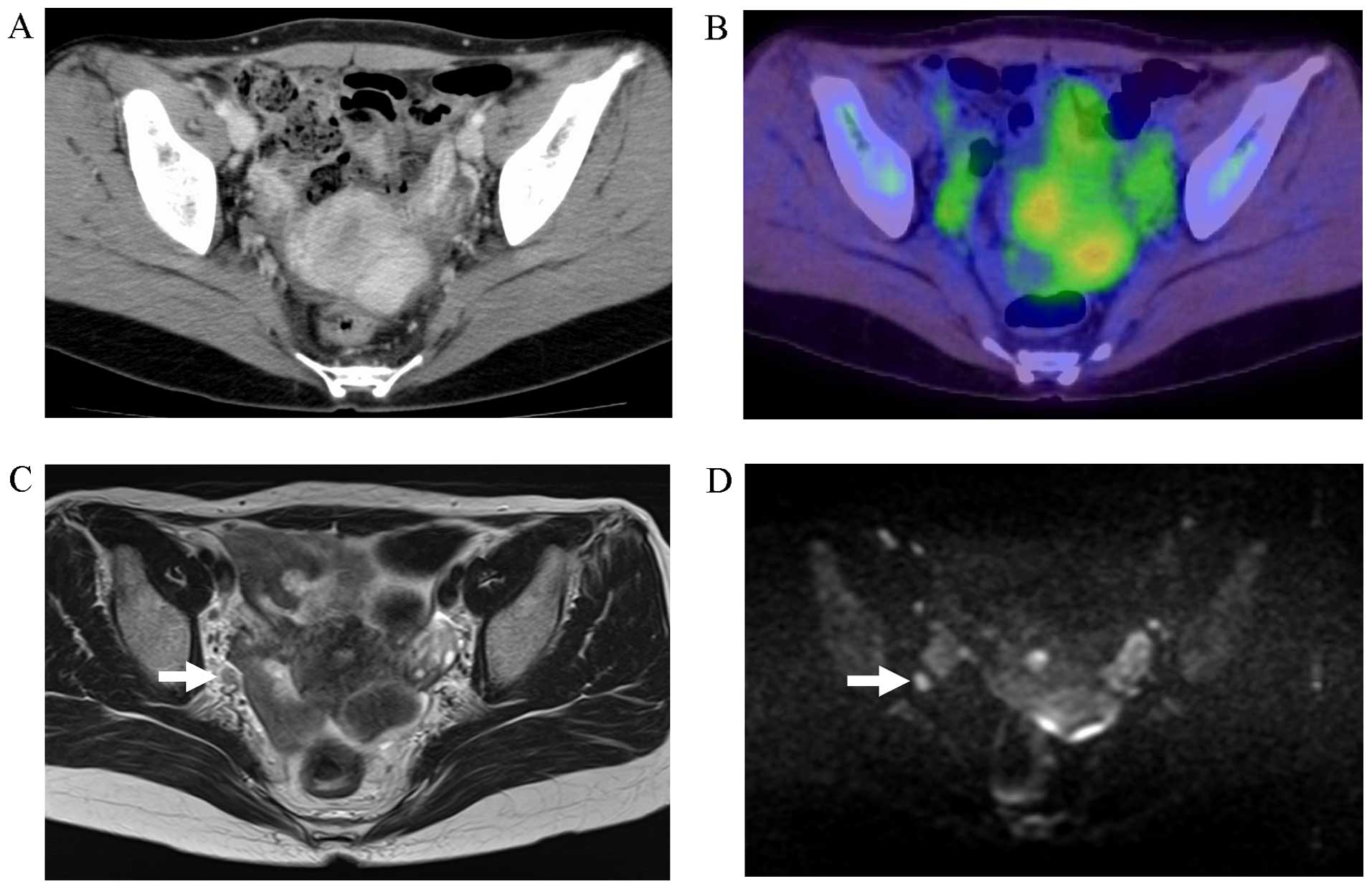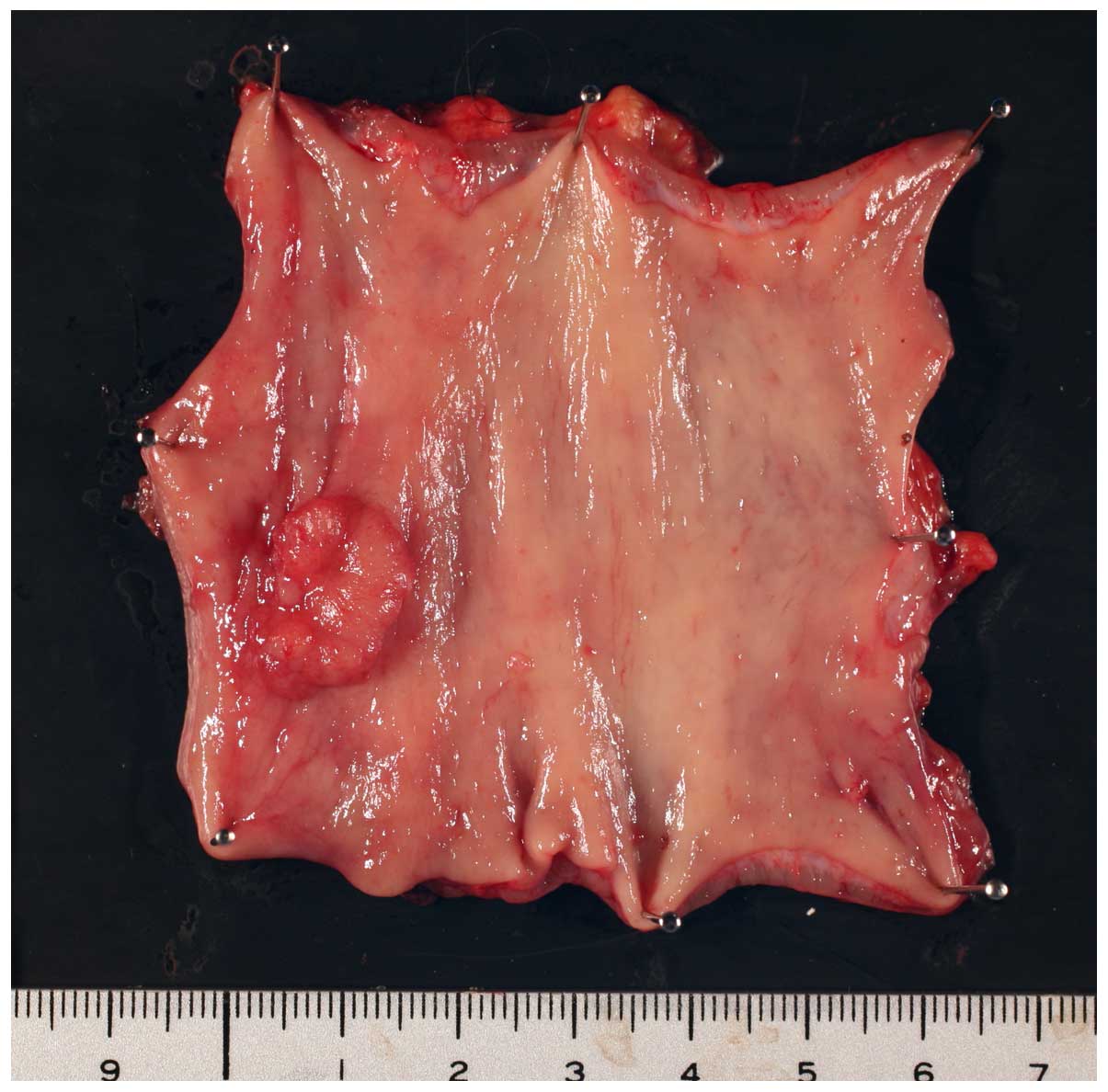|
1
|
Georgiou P, Tan E, Gouvas N, Antoniou A,
Brown G, Nicholls RJ and Tekkis P: Extended lymphadenectomy versus
conventional surgery for rectal cancer: A meta-analysis. Lancet
Oncol. 10:1053–1062. 2009. View Article : Google Scholar : PubMed/NCBI
|
|
2
|
Quadros CA, Falcão MF, Carvalho ME, Ladeia
PA and Lopes A: Metastases to retroperitoneal or lateral pelvic
lymph nodes indicated unfavorable survival and high pelvic
recurrence rates in a cohort of 102 patients with low rectal
adenocarcinoma. J Surg Oncol. 106:653–658. 2012. View Article : Google Scholar : PubMed/NCBI
|
|
3
|
Japanese Society for Cancer of the Colon
and Rectum: Japanese classification of colorectal carcinoma (2nd).
Tokyo: Kanehara: 2009.
|
|
4
|
Akiyoshi T, Watanabe T, Miyata S, Kotake
K, Muto T and Sugihara K: Japanese society for cancer of the colon
and rectum: Results of a Japanese nationwide multi-institutional
study on lateral pelvic lymph node metastasis in low rectal cancer:
Is it regional or distant disease? Ann Surg. 255:1129–1134. 2012.
View Article : Google Scholar : PubMed/NCBI
|
|
5
|
Sugihara K, Kobayashi H, Kato T, Mori T,
Mochizuki H, Kameoka S, Shirouzu K and Muto T: Indication and
benefit of pelvic sidewall dissection for rectal cancer. Dis Colon
Rectum. 49:1663–1672. 2006. View Article : Google Scholar : PubMed/NCBI
|
|
6
|
Ono K, Ochiai R, Yoshida T, Kitagawa M,
Omagari J, Kobayashi H and Yamashita Y: Comparison of
diffusion-weighted MRI and 2-[fluorine-18]-fluoro-2-deoxy-D-glucose
positron emission tomography (FDG-PET) for detecting primary
colorectal cancer and regional lymph node metastases. J Magn Reson
Imaging. 29:336–340. 2009. View Article : Google Scholar : PubMed/NCBI
|
|
7
|
Zhao Q, Liu L, Wang Q, Liang Z and Shi G:
Preoperative diagnosis and staging of rectal cancer using
diffusion-weighted and water imaging combined with dynamic
contrast-enhanced scanning. Oncol Lett. 8:2734–2740.
2014.PubMed/NCBI
|
|
8
|
Kwee TC, Takahara T, Ochiai R, Koh DM,
Ohno Y, Nakanishi K, Niwa T, Chenevert TL, Luijten PR and Alavi A:
Complementary roles of whole-body diffusion-weighted MRI and
18F-FDG PET: The state of the art and potential applications. J
Nucl Med. 51:1549–1558. 2010. View Article : Google Scholar : PubMed/NCBI
|
|
9
|
Torkzad MR, Påhlman L and Glimelius B:
Magnetic resonance imaging (MRI) in rectal cancer: A comprehensive
review. Insights Imaging. 1:245–267. 2010. View Article : Google Scholar : PubMed/NCBI
|
|
10
|
Watanabe T, Itabashi M, Shimada Y, Tanaka
S, Ito Y, Ajioka Y, Hamaguchi T, Hyodo I, Igarashi M, Ishida H, et
al: Japanese society for cancer of the colon and rectum (JSCCR)
guidelines 2014 for treatment of colorectal cancer. Int J Clin
Oncol. 20:207–239. 2015. View Article : Google Scholar : PubMed/NCBI
|
|
11
|
Klessen C, Rogalla P and Taupitz M: Local
staging of rectal cancer: The current role of MRI. Eur Radiol.
17:379–389. 2007. View Article : Google Scholar : PubMed/NCBI
|
|
12
|
Schmoll HJ, Van Cutsem E, Stein A,
Valentini V, Glimelius B, Haustermans K, Nordlinger B, van de Velde
CJ, Balmana J, Regula J, et al: ESMO consensus guidelines for
management of patients with colon and rectal cancer. A personalized
approach to clinical decision making. Ann Oncol. 23:2479–2516.
2012. View Article : Google Scholar : PubMed/NCBI
|
|
13
|
Al-Sukhni E, Milot L, Fruitman M, Beyene
J, Victor JC, Schmocker S, Brown G, McLeod R and Kennedy E:
Diagnostic accuracy of MRI for assessment of T category, lymph node
metastases and circumferential resection margin involvement in
patients with rectal cancer: A systematic review and meta-analysis.
Ann Surg Oncol. 19:2212–2223. 2012. View Article : Google Scholar : PubMed/NCBI
|
|
14
|
Brown G, Richards CJ, Bourne MW, Newcombe
RG, Radcliffe AG, Dallimore NS and Williams GT: Morphologic
predictors of lymph node status in rectal cancer with use of
high-spatial-resolution MR imaging with histopathologic comparison.
Radiology. 227:371–377. 2003. View Article : Google Scholar : PubMed/NCBI
|
|
15
|
Akasu T, Iinuma G, Takawa M, Yamamoto S,
Muramatsu Y and Moriyama N: Accuracy of high-resolution magnetic
resonance imaging in preoperative staging of rectal cancer. Ann
Surg Oncol. 16:2787–2794. 2009. View Article : Google Scholar : PubMed/NCBI
|
|
16
|
Mizukami Y, Ueda S, Mizumoto A, Sasada T,
Okumura R, Kohno S and Takabayashi A: Diffusion-weighted magnetic
resonance imaging for detecting lymph node metastasis of rectal
cancer. World J Surg. 35:895–899. 2011. View Article : Google Scholar : PubMed/NCBI
|
|
17
|
Heijnen LA, Lambregts DM, Mondal D,
Martens MH, Riedl RG, Beets GL and Beets-Tan RG: Diffusion-weighted
MR imaging in primary rectal cancer staging demonstrates but does
not characterise lymph nodes. Eur Radiol. 23:3354–3360. 2013.
View Article : Google Scholar : PubMed/NCBI
|
|
18
|
Choi J, Oh SN, Yeo DM, Kang WK, Jung CK,
Kim SW and Park MY: Computed tomography and magnetic resonance
imaging evaluation of lymph node metastasis in early colorectal
cancer. World J Gastroenterol. 21:556–562. 2015. View Article : Google Scholar : PubMed/NCBI
|
|
19
|
Fujita S, Yamamoto S, Akasu T and Moriya
Y: Risk factors of lateral pelvic lymph node metastasis in advanced
rectal cancer. Int J Colorectal Dis. 24:1085–1090. 2009. View Article : Google Scholar : PubMed/NCBI
|
















